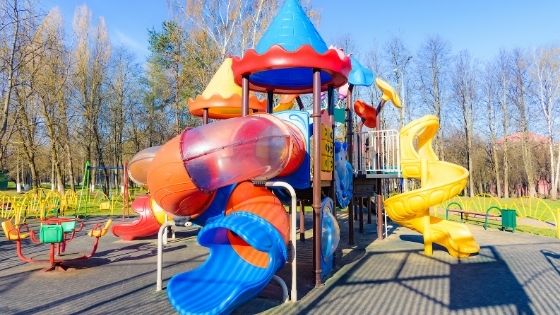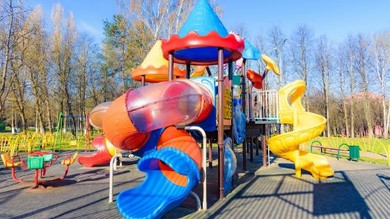
Recess is an essential part of keeping kids active and healthy, and it allows children to develop important skills such as how to socialize and interact with the world around them. A good school playground should work to give kids a space to run around and burn off energy that would otherwise make them restless in the classroom. So, to make sure your playground is allowing kids a chance to make friends, run around, and improve their focus in class all while staying safe, read this guide on how to improve your school playground.
Implement Safety Measures
The first point of order is obvious—we need to make sure these rambunctious kids are safe! Injuries from falling will be the most common hazard your playground faces, so make sure your playground has proper surfacing rather than asphalt or concrete. Instead, invest in a pour-in-place rubber surfacing kit or wood chips for your playground. It may not seem much better, but these surfacing materials absorb much more impact, which will reduce the severity of injuries.
Zone the Area
Another aspect of safety and effective playground design is properly zoning the space. By dividing the playground into different zones, you can better control the safety of the playground by ensuring that a kid on the swing set isn’t going to end up in the middle of a dogpile from a nearby football game. This is also a way to improve your school playground if you notice that certain spaces aren’t being used very often. This ensures the entire space is used well and kids feel that they have enough room to play as they like without stumbling over each other.
Outline Traditional Games
A good, inexpensive addition to any playground is marking out common games such as tic-tac-toe, four-square, or hopscotch. This offers structured play where kids can participate in some of their favorite games without having to figure out and organize them themselves. Yet, it still encourages friendly competition and teamwork, as the children will hold each other accountable for following the rules and displaying good sportsmanship.
Leave Empty Space
While you want to provide plenty of playground equipment and options for kids to explore, you still want to leave some empty space for kids to enjoy. This empty space allows kids to participate in free-play where they are not beholden to any rules or structure and instead are able to make up their own games and play as they like. This is where children develop social and leadership skills because they can take the reins, creating their own rules and figuring out how to get along without adult intervention.

